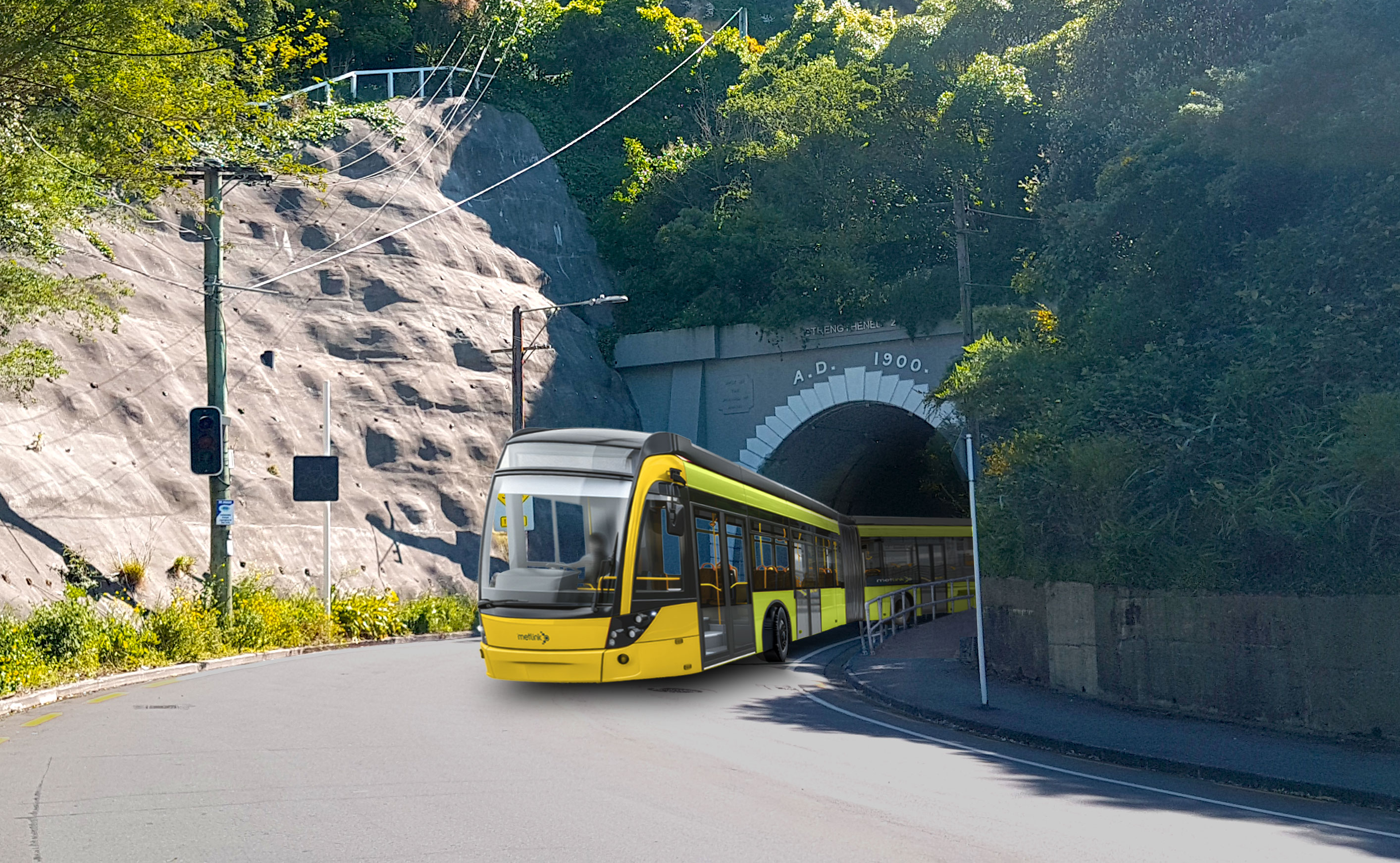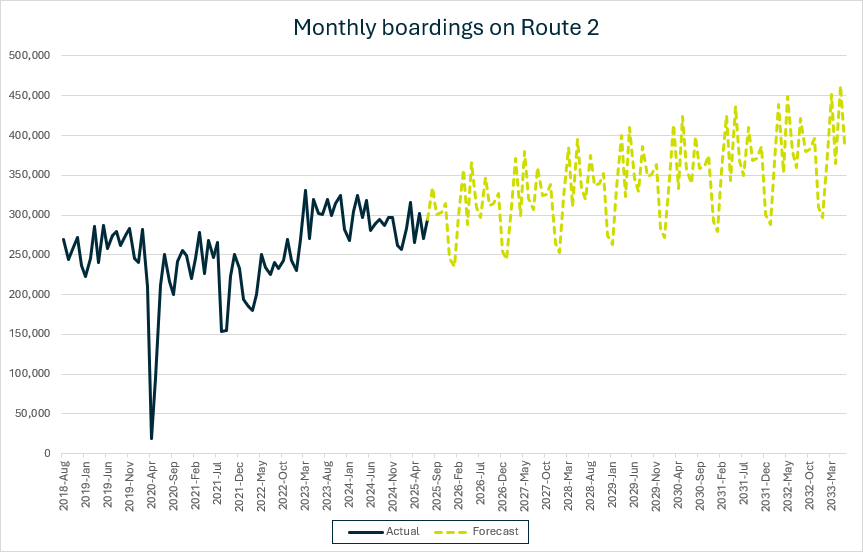Articulated Buses
Read more about the introduction of EAVs to Route 2 in 2027: Bendy buses coming to Wellington in 2027 » Metlink

Description
Metlink is introducing electric articulated buses to meet growing passenger demand on Route 2.
An articulated bus is usually a single-decker, comprised of two or more rigid sections linked by a pivoting joint (articulation). This creates a longer length and higher passenger capacity while still allowing the bus to manoeuvre adequately.
Five electric articulated buses will be introduced in late 2026 or early 2027 to run between Karori and the end of Courtenay Place.
Decisions will then be made whether to introduce additional buses to run the full length of Route 2.
Updates
Metlink ran a second articulated bus trial on Thursday 23 and Friday 24 January 2025 to test transport infrastructure (roads and bus stops) along Metlink’s Route 2.
This included the full route between Karori and Miramar and Seatoun as well as a test of common diversion routes during road closures to confirm suitability.
An articulated vehicle borrowed from Auckland was used in the trial, as the new electric articulated buses are not yet in New Zealand. While the bus was travelling along the route, footage was recorded at certain points around Kelburn and Karori. Check out the video below.
Background
Route 2 runs between Karori and Miramar/Seatoun. This is Wellington’s busiest bus route and passenger demand is still growing.
Passenger capacity has been reached during peak travel times and is expected to nearly double over the next ten years. Metlink needs to meet this demand to avoid residents being left behind at bus stops.
Double decker buses cannot be used due to the size of the Karori and Seatoun tunnels and adding more standard size buses will cause additional congestion. This congestion would also impact other bus services along the route, such as the Golden Mile and through the single-lane Hataitai bus tunnel.

It is proposed to introduce five electric articulated buses in late 2026 to early 2027 as a pilot to help meet this increase in demand and to review how well these buses operate around the city.
The pilot would run between Karori to the end of Courtenay Place as this is the busiest section.
Following this pilot, consideration will then be given to adding more of these buses and extending them on the route to Miramar and Seatoun.
The Courtenay Place to Seatoun/Miramar section of the Route 2 corridor would require bus stop and roading design improvements before electric articulated buses could be introduced.
For more information on this, head to the Route 2 webpage.
Partnerships
Greater Wellington Regional Council (GWRC) is working with Wellington City Council (WCC) and the bus service operator Kinetic on this project.
Benefits
Electric articulated buses will allow passenger demand to be met with far fewer buses than would otherwise be required. Electric articulated buses have a capacity of 112 passengers, which is 65% more than the capacity of buses currently used on the route. When compared to our largest electric double decker bus, the new articulated bus will be able to carry 12% more passengers.
This allows us to increase passenger capacity without adding more buses and increasing congestion along the route and the city. In line with our commitment to de-carbonise the bus fleet, only electric articulated buses will be introduced.
Impact
Infrastructure works on Route 2 between Karori and Courtenay Place are nearing completion, with some additional changes being consulted on with the local community.
The remainder of Route 2 from Courtenay Place through to Miramar/Seatoun requires additional work to create high-capacity bus stops. A high-capacity stop increases the length of bus stops, which will allow two standard buses to use these stops at the same time, and will also allow space for the introduction of articulated buses in the future.
Some intersections would also be improved to allow buses to manoeuvre better.